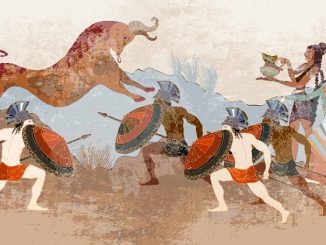Unraveling the mysteries of the Mycenaeans, a once vibrant civilization, poses a challenging task. The mystery surrounding their demise, marked by the destruction of major palaces around 1250 BC, has sparked debate among historians. While some attribute the cause to invaders such as the Dorians, most now cite climate change and natural disasters as important factors. A catalog of adverse events, from seismic upheavals to crop failures, led to the abandonment of Mycenaean sites. Located at a strategic altitude of 280 meters (918.63 ft) above sea level, the city of Mycenae offers natural defenses amid majestic mountains. Legend has it that this was the palace of Agamemnon, a mythical king whose existence remains unconfirmed.
The Mycenaeans are often considered the first Greeks, but inherited the mantle from the Minoans. The common cultural traits and trade relationships between these civilizations laid the foundations for Greece’s future.
Greek heroes like Perseus, interwoven with Mycenaean stories create a bridge between myth and history. Heinrich Schliemann’s discoveries, fueled by Homer’s epics, unearthed this advanced civilization. Meanwhile, the Cyclopean walls of Mycenae, built of massive stone blocks, testify to a lost architectural technique. As we explore the depths of Mycenaean history, we are faced with a civilization shrouded in myth and molded by the echoes of time.


